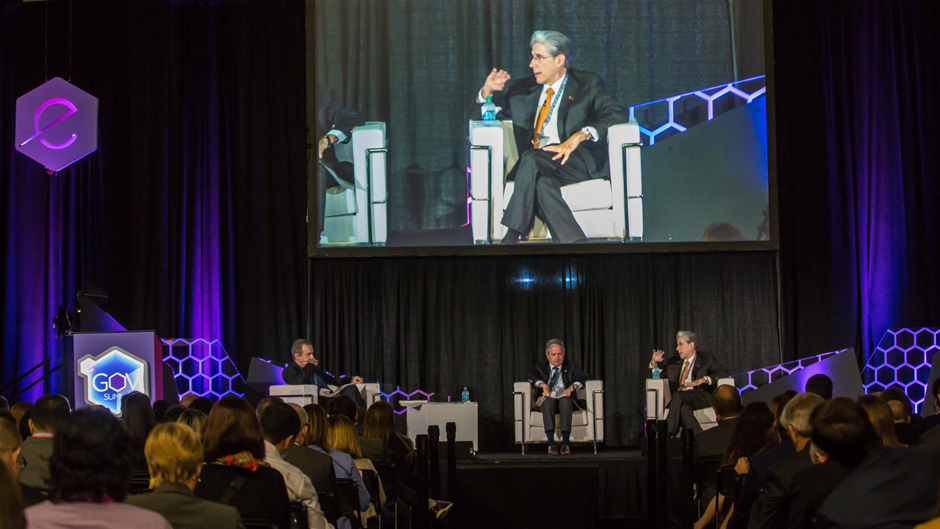While moderating the “Innovation in the Americas” session at eMerge Americas on June 12, Miami Herald syndicated foreign affairs columnist Andres Oppenheimer introduced University of Miami President Julio Frenk as “one of the few presidents of a U.S. university who are deeply connected to the region.”
Frenk, who was on stage with Oppenheimer and Andres Ibarra, Argentina’s minister of modernization, replied that being connected to the hemisphere is not only a presidential priority but an enduring vision that dates back to the University’s founding in 1925 as a “Pan American university.” Yet until now, Frenk explained, there “was never a strategy.”
The annual two-day eMerge Americas conference brings global business and industry leaders together with investors, entrepreneurs and innovators to focus on transforming Miami into the technology hub of the Americas. The “hemispheric strategy” that President Frenk described positions the University at the center of that hub.
“There’s a momentum growing, and we can play a major role,” Frenk said, referring to the “critical mass of scientists and engineers in Latin America” who face challenges such as regulatory obstacles and limited access to technology and investment capital. Converting the “critical mass” into a “critical density” of talent across the Americas requires a strong and structured framework—precisely the idea behind the University’s initiative for a Hemispheric University Consortium. Similar to the Erasmus Programme in the European Union, a Hemispheric University Consortium would take student and faculty international exchange to a higher level, facilitating the flow of ideas and talent among partner institutions. This, Frenk said, will fuel not only innovation but human understanding as well.
“The only way we’ll be able to deal with prejudices is to build a global citizenship and share a common educational experience, increasing opportunities for a more open set of interactions,” Frenk said.
When Oppenheimer asked him about the viability of cross-border learning in light of proposed federal funding cuts for educational exchange, Frenk said, “We have embarked on an intense campaign that students from other countries are welcome here. If we build a consortium and seek diverse sources of funding, including private investors and philanthropy, we can mitigate the threat of funding cuts.”
The Hemispheric University Consortium, which is among the initiatives of the Roadmap to Our New Century, will help the University develop the five pillars of its hemispheric strategy: 1) the study of the hemisphere; 2) educational exchange; 3) research collaborations; 4) technology innovation; and 5) health care.
All three speakers agreed that creating partnerships throughout the hemisphere is the accelerant that could catapult Miami from the cusp of a tech boom to “Silicon Valley of the Americas” status. Noting that “innovation is a contact sport,” Frenk highlighted several University platforms already facilitating global R&D collaboration. Among these is Converge Miami, which joins start-ups and mature firms together in an environment focused on bringing new technologies to market. Partnering with the Cambridge Innovation Center and Wexford Scientific, the University on July 1 is launching Converge Labs, the region’s first shared biomedical wet lab space for early-stage start-ups.

